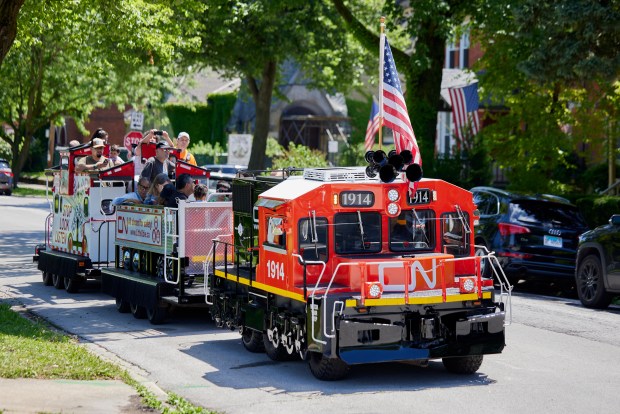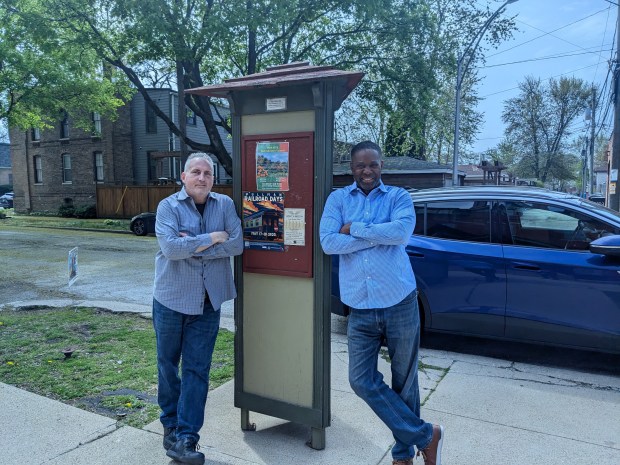Back when Joe Szabo was a Metra conductor, Pullman was one of his favorite stops on the Electric District Line because of the strong community there as well as its place in history.
So after he retired, he knew he had to become part of it. In 2019 he became president of the Historic Pullman Foundation and then dreamed up the idea for Railroad Days. Now in its fourth year, this celebration of Pullman’s train history will take place May 17 and 18.
“I was always captivated by this gorgeous community and wanted to understand more,” said Szabo, who now is the president emeritus of the Historic Pullman Foundation but is still the Pullman Railroad Days 2025 chairman. “When I was able to understand what Pullman meant in history and the evolution of our nation, I couldn’t resist getting involved.
“The goal was to create a national tourism event that really celebrated the railroad and industry heritage of Pullman … this is a place that changed America.”
Szabo, a fifth-generation railroader, was appointed in 2009 by former President Barack Obama to lead the Federal Railroad Administration. His resume also includes a stint as Illinois state director for the United Transportation Union.
The Railroad Days event at Pullman National Historical Park celebrates American railroad history and industrial innovation. There will be restored Pullman rail cars on display at the 111th Street Metra Electric station, in partnership with Metra and the American Association of Private Rail Car Owners.
That includes a car built at Pullman in 1928 for the Bangor & Aroostook Railroad in Maine, which for 75 years was the rail home to every B&A executive, according to the Historic Pullman Foundation. The car was sold in 2003 to the Plymouth & Lincoln Railroad of New Hampshire, where it was officially named the “Suitsme” because the executive who initially commissioned the car in 1928 was said to have exclaimed, “It suits me!”
Also on display will be the Promontory Point, which originally cruised through the Southland and beyond after being commissioned in 1953 by the Chicago & Eastern Illinois Railroad for long distance passenger service before being sold several times and eventually landing with a private collector.
Visitors also can tour the Menzies Vista, a dome lounge car built in 1955 for Union Pacific for its City of St. Louis train. In 1973 it was sold to Amtrak for use on its Auto Train, according to the foundation.
The festival also will feature a model train extravaganza at the Historic Pullman Exhibit Hall, rides on a vintage CTA bus around the area as well as guided walking tours.
New this year is a 100th anniversary celebration for the Brotherhood of Sleeping Car Porters, the nation’s first Black labor union. A. Philip Randolph, the union’s leader, will be inducted into the National Railroad Hall of Fame, and a gold medal will be presented to the Pullman National Historical Park during a reception May 15. The medal will then be displayed at the National Park Visitor Center.

“This is a part of history,” said Robert Montgomery, executive director of the Historic Pullman Foundation, the non-profit partner of the Pullman National Historical Park. “Pullman and the company town shaped America. It definitely changed how people travelled through the country.”
Montgomery said one of the foundation’s goals is to get railcars back permanently, so the public can view them regularly. They hope to build a rail yard in front of the former Pullman factory, possibly having one car there and others stored nearby.
One of Montgomery’s favorite memories of last year’s Railroad Days was seeing children riding on the Little Obie and Mighty Chessie replica trains.
“They really loved these two trains pulling people around,” he said.
Going aboard trains from the 1950s and 1920s and seeing the differences between the ages was another perk for Montgomery and other employees and attendees.
“It’s the luxury that was put into these cars, the use of space,” said Bart Darress, the foundation’s communications director. “To build these opulent spaces … it’s something to behold.”

Also at Railroad Days, the Bronzeville Black Metropolis National Heritage Area offers a trivia game about the daily duties of Pullman Porters. The Chicago Architecture Center will present architecture trivia with prizes and Pullman-themed coloring sheets for children. The Illinois Railway Museum will exhibit travel guides through the ages. And the South Suburban Genealogical & Historical Society and Library in Hazel Crest will present an exhibit about Pullman employee records.
Al and Ray Quiroz, brothers and the last two Pullman Factory workers in the neighborhood, will show off Pullman worker’s toolbox and other artifacts. Resident and Pullman historian Andy Bullen will showcase samples from the foundation’s collections, including Pullman blankets, china, recipe cards, and correspondence to the Pullman Company from the 1890s to 1910s.
The Newberry Library will have personnel records visitors can check out for relatives who were Pullman porters, maids, conductors and shop workers.
“A lot of people have a connection to this throughout the country and Chicago,” noted Darress.
PullmanArts at the Block House Gallery will also have an exhibit. There will be local food, too, including hot dogs and gelato.
The event showcases the Pullman National Historical Park, which encompasses 103rd Street to 115th Street, the community, factory site, the official Pullman Historical National Park Service Visitor Center, historic Clock Tower Building and Hotel Florence, among other sites.
Szabo said he liked to think of Pullman as “the place where it happened,” taking a line from the musical “Hamilton.”
“Other communities can have railroad celebrations, but we’re the only one at a national place and the place where it happened, where America was transformed,” said Szabo.
Railroad Days is open from 10 a.m. to 5 p.m. May 17 and 18 at 11141 S. Cottage Grove Ave. Early Bird tickets are $25, $10 off the regular price and can be reserved at bit.ly/PullmanRRD.
Janice Neumann is a freelance reporter for the Daily Southtown.





